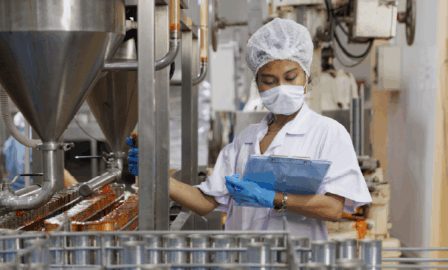What Will Veeva Vault LIMS Mean for the Life Sciences Industry?
Veeva announced on September 28, 2021 its intention to release a new LIMS application – Veeva Vault LIMS – in the second half of 2022. And it’s become increasingly clear this has the potential to disrupt the laboratory informatics marketplace.
Truly Cloud Native
With Veeva Vault LIMS, Veeva intends to provide a LIMS native to the cloud. Many of the current LIMS providers offer cloud availability or cloud compatibility but a solution designed in the cloud should be fundamentally different. One of the biggest barriers to a more automated laboratory is the latency issues scientists experience at the bench with poor architecture. A cloud-native solution could address this and be more scalable long-term – not just from an architectural perspective, but also in terms of meeting evolving business requirements. This alone makes it a great option for emerging biotech and cell therapy focused companies.
Veeva Vault LIMS Could Enable Better Integration and Efficient Master Data
The promise of cloud-based, quality landscape integration is unprecedented:
“Seamless integration with Veeva Vault QMS, Veeva Vault Quality Docs, and Veeva Vault Training will enable the use of standard operating procedures (SOPs), job-aids, and relevant reference content across lab operations. With a unified suite of quality and lab applications, manufacturers can optimize lab management and significantly simplify their systems landscape.”
Our clients have frequently struggled with the investment associated with quality system integration. Many of the quality systems in the market today are so niche that custom integrations must be built and validated. The time and money required to achieve these integrations has prevented the optimization of system interactions, resulting in duplicate entry, opportunities for error, and/or high total cost of system ownership. With this most recent Veeva Vault LIMS announcement, Veeva could change all of this.
Veeva could enable a world where SOPs and job aids can be easily pulled up on the bench, where users can be prevented from entering results if they aren’t trained in a method, or where master data updates can be propagated more automatically after a specification update.
The master data automation could be the most revolutionary. When our clients embark on the LIMS journey, they imagine a paperless world. Frequently they discover the work involved in automation includes heavy lifts of cleansing data, maintaining automation programs, validation, and verification. Then couple that with the need to update all of it when there’s a product added to a site, assay change, new instrument, or specification update. Costs increase, dreams are dashed, and budgets are blown.
Veeva could enable a world where when a product specification and assay is updated, approved and becomes effective, the changes propagate to the master data records in LIMS. Depending on the level of the integration and the amount of change a site goes through annually, the cost and time savings to our clients would change the marketplace.
Not Forgotten? Stability, EM & Instruments
Watching the press on the new solution for the past few months has left me curious about their approach to Stability, Environmental Monitoring (EM), and Instrument Integration. These are particular areas of focus because Stability, EM, and Instrument Integration processes are sometimes treated as modules in other LIMS and they behave like bolt-ons that are clunky and require investment in customization.
In addition, these modules are critical to laboratory operations:
- Stability is frequently an afterthought for LIMS vendors but can be up to 50% of a laboratory’s testing capacity. So not intentionally putting Stability on the system roadmap could leave labs heavily reliant on legacy systems or even paper.
- EM, including water and personnel monitoring, especially in aseptic facilities is a business-critical laboratory activity. While the assays are minimal and the work is routine, the volume of testing and its relationship to manufacturing and batch release can be quite complex. In addition, there are multidimensional routine and ad-hoc reporting requirements that are usually a heavy implementation investment.
- True laboratory automation is only realized through instrument integration. Without it, efficiency and data integrity concerns will continue to reign. However, instruments are far from plug-and-play with LIMS and we’re interested to see Veeva’s approach to integration – both simple and complex, across several of the top instrument vendors.
If Veeva can begin with the end in mind for Stability, EM, and Instrument Integration and elegantly deliver these solutions, it could further differentiate the product.
Final Thoughts on Veeva Vault LIMS
We’re genuinely excited to see the promise of this product realized. We intend to stay smart on the new Veeva Vault LIMS offering – exploring it’s features and differentiation. Mostly, we look forward to partnering with our clients to assess and implement the product to improve laboratory operations. Subscribe below or contact us today to learn more about Clarkston’s laboratory informatics insights, services, and perspectives.




